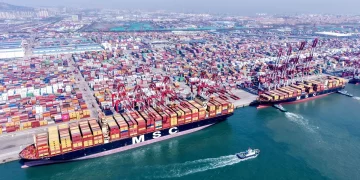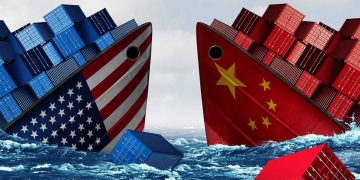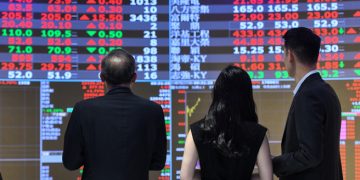Introduction
International trade policies are a central determinant of the functioning of global markets, influencing everything from commodity prices to consumer goods. When governments change trade policies, whether through tariffs, trade agreements, sanctions, or subsidies, it can lead to shifts in supply and demand dynamics, affecting prices across various markets. Such changes can have both immediate and long-term impacts on the global economy, often resulting in significant price volatility. This article explores how fluctuations in international trade policies can drive price volatility in global markets, examining key areas where policy shifts exert their most profound effects.
Section 1: Tariffs and Trade Barriers
One of the most direct ways in which international trade policies can influence prices is through the imposition or removal of tariffs and trade barriers. Tariffs—taxes placed on imported goods—have long been used by governments as a tool to protect domestic industries, encourage local production, or retaliate against perceived unfair trade practices.
Immediate Effects of Tariffs on Prices:
- Cost Increases for Imported Goods: The introduction of tariffs on imported goods leads to an increase in the cost of those goods. This directly impacts the price that consumers and businesses must pay for foreign products. For example, when the U.S. imposed tariffs on Chinese goods during the trade war under the Trump administration, it led to higher prices for a wide range of consumer goods, including electronics, clothing, and machinery. Impact on Global Markets: The increased costs associated with tariffs can cause immediate price hikes, not only in the target country but also in other regions. Global supply chains that depend on low-cost imports from certain regions may become more expensive, creating ripple effects that extend to various industries.
- Retaliatory Tariffs: Countries affected by tariffs often respond with retaliatory tariffs on products from the country that imposed the original tariffs. For example, China imposed tariffs on U.S. agricultural products in response to U.S. tariffs on Chinese goods. This retaliation causes price increases in the targeted goods, disrupting trade flows and price stability. Impact on Global Markets: As a result of retaliatory tariffs, prices for goods and services in both countries rise. In the long run, such measures can lead to inflationary pressures globally, particularly in industries dependent on international trade.
Long-Term Effects of Tariffs on Prices:
- Supply Chain Disruptions: The longer tariffs remain in place, the greater the impact on global supply chains. Manufacturers often rely on imports of raw materials or intermediate goods. As tariffs increase the cost of these goods, companies may face higher production costs, which could be passed on to consumers. These shifts in production costs can drive price increases in sectors such as automobiles, electronics, and industrial machinery. Impact on Global Markets: Over time, prolonged tariffs can encourage companies to seek alternative suppliers or relocate production to avoid tariff-related costs. This shift in supply chain patterns can lead to price fluctuations, particularly in industries where production depends on cross-border supply chains.
- Encouraging Domestic Production: In some cases, tariffs are designed to incentivize domestic production. While this may boost local manufacturing, it can also lead to higher costs. Domestic producers, particularly in countries with higher labor costs or lower productivity compared to foreign competitors, may not be able to produce goods as cheaply as those produced abroad. Impact on Global Markets: This can lead to a situation where prices rise for domestic consumers, as the cost of goods increases in response to the higher production costs. Globally, prices for certain products may also rise as consumers look for alternative sources of goods, potentially creating supply shortages and further price volatility.
Section 2: Trade Agreements and Free Trade Policies
On the other hand, changes in trade agreements—such as the signing of new free trade agreements or the abolition of existing trade deals—can help to stabilize or lower prices in global markets. Free trade agreements (FTAs) remove trade barriers between participating countries, fostering a more efficient flow of goods, services, and capital.
Immediate Effects of Trade Agreements on Prices:
- Reduction in Tariffs: One of the most significant immediate effects of free trade agreements is the reduction or elimination of tariffs. This results in a decrease in the cost of imported goods, which often translates into lower prices for consumers. For instance, after the implementation of the North American Free Trade Agreement (NAFTA) between the U.S., Canada, and Mexico in 1994, prices for a variety of goods, including agricultural products and manufactured goods, decreased in participating countries due to the reduction of trade barriers. Impact on Global Markets: When tariffs are reduced, the cost of doing business between countries falls, and products become more affordable. As a result, the prices of goods and services can stabilize, benefiting consumers globally and increasing international competition, which can help drive prices even lower.
- Increased Competition and Efficiency: Trade agreements often lead to increased competition, as businesses gain access to new markets with fewer barriers. As competition grows, companies are incentivized to cut costs, innovate, and offer better prices to consumers. This is particularly true in sectors such as technology, agriculture, and consumer goods, where trade deals can open up access to new sources of supply at lower prices. Impact on Global Markets: More competition and better access to efficient production networks can lead to lower prices and greater choice for consumers worldwide. This increase in market efficiency can reduce volatility and contribute to more stable pricing in global markets.
Long-Term Effects of Trade Agreements on Prices:
- Industry Restructuring: Over time, trade agreements may lead to the restructuring of industries within the participating countries. As companies benefit from reduced tariffs and increased access to international markets, they may adjust their production strategies and global operations. Some industries may thrive, while others may decline, leading to shifts in supply and demand that can impact prices. Impact on Global Markets: The long-term effects of trade agreements may involve shifts in prices due to changes in the relative competitiveness of industries in different regions. For example, if a country that once relied on expensive domestic production opens up to cheaper imports, domestic prices may fall, but certain local industries may struggle to compete.
- Supply Chain Optimization: Over time, the removal of trade barriers and the fostering of closer economic ties lead to the optimization of global supply chains. Companies may shift production to countries with lower costs, which can lower the price of goods globally. This optimization often leads to more efficient supply chains that deliver products at lower prices, which can stabilize global market prices over time.

Section 3: Trade Sanctions and Embargoes
Trade sanctions and embargoes, often used as political tools, can significantly impact prices in global markets by restricting the flow of goods, services, and capital to or from certain countries.
Immediate Effects of Sanctions on Prices:
- Supply Shortages: When sanctions are imposed on a country, they can lead to a disruption in the supply of goods and raw materials from that country to the global market. For instance, sanctions on Iran have affected the global oil market by restricting the supply of Iranian oil, leading to price spikes in global energy markets. Impact on Global Markets: The restriction of critical exports such as oil, natural gas, metals, or agricultural products can lead to price volatility in the affected sectors. These supply shortages force countries and companies to find alternative sources, which can drive up prices in the short term.
- Increased Production Costs: Sanctions often force companies to pay higher prices for goods that are in short supply due to restricted imports. This can lead to higher costs for producers, who may then pass these costs onto consumers in the form of higher prices. Impact on Global Markets: In addition to the direct price effects, sanctions can create a ripple effect throughout the global supply chain, causing price volatility as markets scramble to adjust to new production and supply conditions.
Long-Term Effects of Sanctions on Prices:
- Market Reorientation: Over time, countries subject to sanctions may seek to diversify their trade partners and shift production to new markets. For example, when sanctions were imposed on Russia in 2014, Russia turned to China and other non-Western nations for trade and investment. While this shift may mitigate some of the direct price impacts, it can still lead to inefficiencies that affect prices. Impact on Global Markets: The long-term effects of sanctions can result in shifts in global market structures. As new trade routes and alliances form, industries that once depended on access to sanctioned countries may see increased costs and volatility, as they seek alternative suppliers or markets.
- Alternative Supply Sources: In the long run, sanctions may encourage countries to find or develop alternative suppliers for essential goods. While this might stabilize prices over time, it can also lead to inefficiencies in the global market, as new sources of supply may not be as cost-effective as the ones that were previously available.
Section 4: Currency Fluctuations Due to Trade Policy Changes
Changes in trade policy can also lead to fluctuations in currency exchange rates, which in turn affect prices in global markets. Currency devaluation or appreciation, often resulting from trade policy changes or economic sanctions, can significantly alter the cost of imports and exports.
Immediate Effects on Prices:
- Imported Goods Prices: A devaluation of a country’s currency, often as a result of trade policy changes, makes imports more expensive. This leads to price increases in imported goods and services. For example, if the U.S. dollar weakens due to a shift in trade policy, the cost of imported goods rises, leading to higher prices in U.S. markets. Impact on Global Markets: Fluctuations in exchange rates can cause instability in global markets, as businesses and consumers adjust to changing prices. When major currencies like the U.S. dollar or the euro experience volatility, it can lead to price instability in global commodities, including oil, gold, and agricultural products.
Long-Term Effects on Prices:
- Currency Resilience: Countries with resilient currencies may gain a competitive advantage in global markets, as their exports become cheaper for foreign buyers. Conversely, countries with weaker currencies may see the opposite effect, where their goods become more expensive abroad. Impact on Global Markets: Long-term fluctuations in exchange rates, driven by changes in trade policies, can lead to shifts in global trade patterns. This may contribute to price changes in different markets, particularly in industries where foreign exchange costs represent a large portion of total expenses.
Conclusion
Changes in international trade policies—whether through tariffs, trade agreements, sanctions, or currency fluctuations—play a major role in driving price volatility in global markets. The impact of these policies can be immediate or long-term, affecting everything from consumer goods prices to commodity markets and global supply chains. Understanding how these shifts in trade policies influence global prices is crucial for businesses, investors, and policymakers alike. As the global economy continues to evolve, trade policies will remain a key driver of price fluctuations, with far-reaching consequences for the international market landscape.































